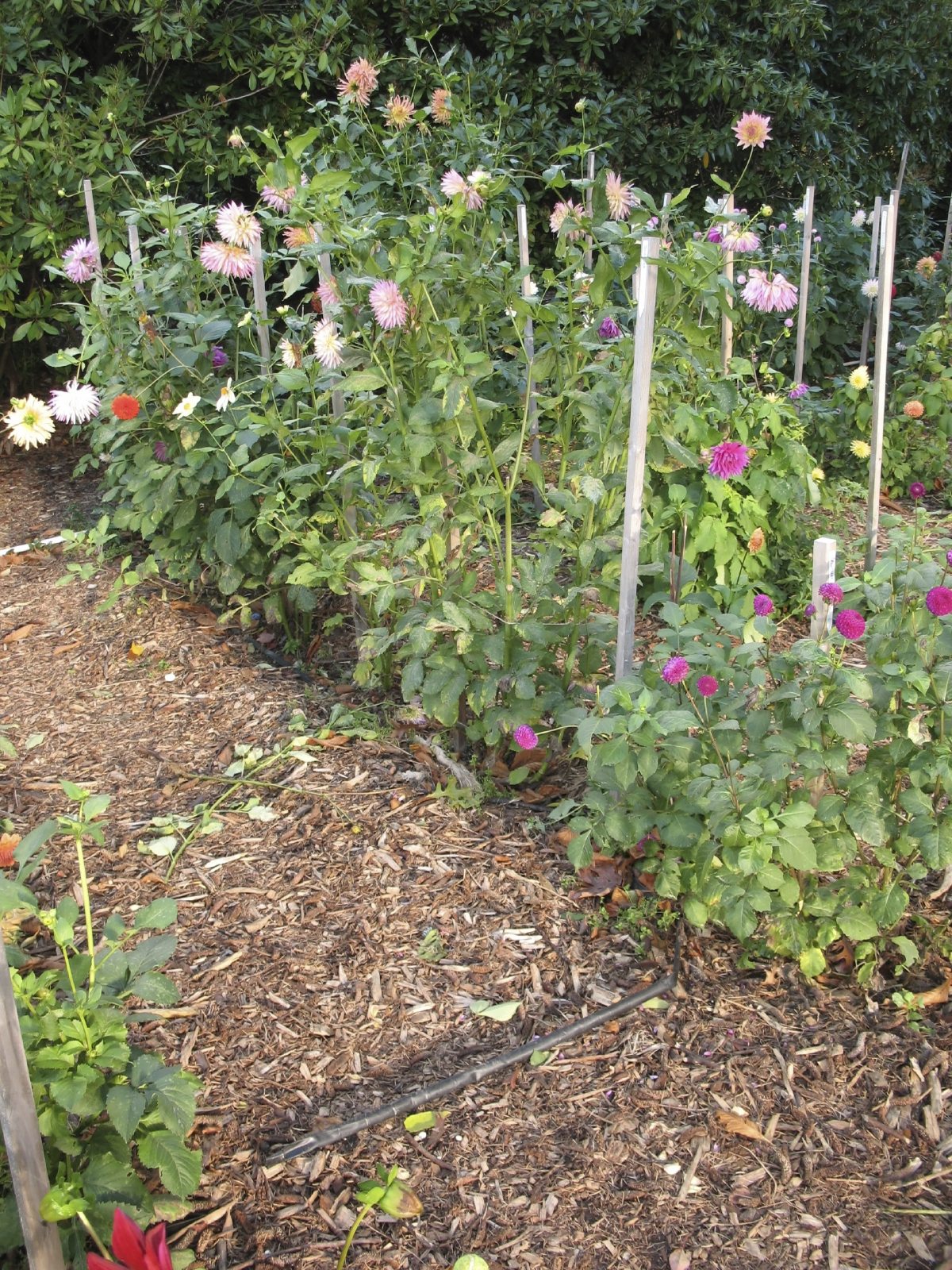
Staking an annual means providing the plant with extra support to help it grow upright. Staking isn’t necessary for all annuals, but it’s particularly helpful for annuals that:
- Are more than 3 feet tall
- Have thin stems
- Have heavy or big flowers
You can stake any plant that seems likely to need support from the time that it is a seedling. Also keep an eye out through the summer for plants that are drooping under their own weight—you should shore these plants up with a stake.
Methods of Staking
You can either stake your annuals one plant at a time or stake multiple plants at once.
Individual Stakes
An individual stake is a single pole used to support a single plant. You can use wooden stakes, sturdy sticks, or bamboo or plastic poles as stakes. To stake an individual plant:
1. Place the stake in the ground 2–3″ from the base of the plant.
2. Tie a length of twine or fabric around the stake and stem of the plant about 2–3″ above the ground. Twine will work for most plants, though fabric works best for annuals with very large flowers, such as sunflowers, because fabric is less likely to cut into the stem.
3. Continue tying twine or fabric around the stakes and plant every 3–4″ up the stem. As the plant grows, you’ll likely have to add more ties.
Stakes for Multiple Plants

img: gardeningknowhow.com
To stake multiple plants at once:
1. Create a perimeter of stakes around the flowers that you want to support.
2. Tie a length of twine or fabric around the stakes.
3. As the plants grow, add more twine, or just move the single strand of twine up the splints.

